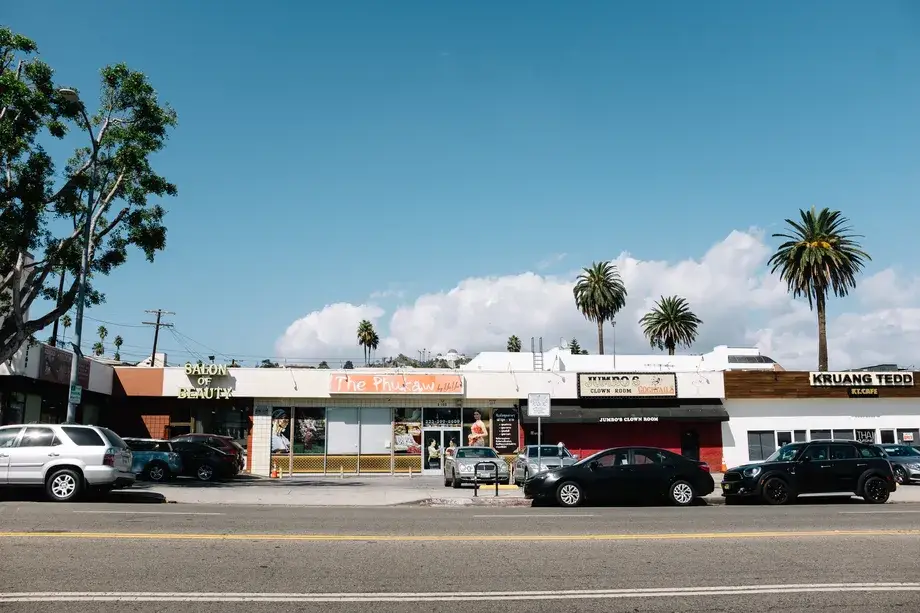How LA became the land of strip malls
Architecturally, it’s just another nondescript, drab corner strip mall, fronted by a wide parking lot dotted with pigeons (and their droppings). It happens to be on the gray corner of Hollywood and Winona boulevards, in Hollywood’s Thai Town.
Its appearance might be unimpressive, but this strip mall teems with life and culture. It is anchored by the tiny Jumbo’s Clown Room, a locally legendary strip club and bar, where drunken patrons young and old spill into the parking lot smoking cigarettes and vaping. Next door is the Phukaw by Ya Ya, a clothing store that sells elaborate and colorful Thai tradition dresses. Then there is a pet store and Kruang Tedd Thai, a hip restaurant serving comforting som tum and jungle curry.
This is just one of the thousands of aging corner strip malls all over Los Angeles County, so embedded in the landscape that Angelenos hardly notice them, even as they patronize them daily.
“It’s been a very popular phenomenon,” says professor Richard Longstreth, who wrote the definitive book on the subject. “The idea of not having to search for a parking place and just driving up to a store is still an appealing one to many Americans, particularly in a city where pedestrian activity isn’t very strong in most places.”
Strip malls in Los Angeles were not always such a non-event. On October 24, 1924, Los Feliz Boulevard in Glendale was backed up with 11,000 cars, boasting license plates from 34 states. They were there to experience an innovation in convenience, Ye Market Place, the Southland’s first drive-in market—and the grandmother to the corner strip mall.
Throughout the day, Longstreth writes in The Drive-In, The Supermarket, and the Transformation of Commercial Space in Los Angeles, 40,000 people crowded into the U-shaped, $65,000 structure dreamed up by insurance adjuster C.I. Peckham. The drive-in was his response to the frustrations of automobile-centered life in Los Angeles.
“Peckham reputedly initiated the project because of his frustration at having to drive around a block two or three times in order to find a parking space while running errands,” Longstreth writes.
The task to design this new concept was assigned to Pasadena architect Frederick Kennedy. He designed a U-shaped retail building that surrounded a large parking lot covered in crushed white granite, much like the gravel used at gas stations of the time. There were modern conveniences, including covered walkways that led to public bathrooms and spotlights that lit the complex at night.
Despite the drive-in’s thoroughly modern purpose, the façade of Ye Market Place was highly ornamental. Designed in a style labeled “post-medieval English,” the building “suggested a handsome stable compound of some grand estate,” Longstreth writes. “The image was reassuring—quaint, ornamental, intricate in detail—and would be viewed as an asset to nearby residential tracts then being developed.”

